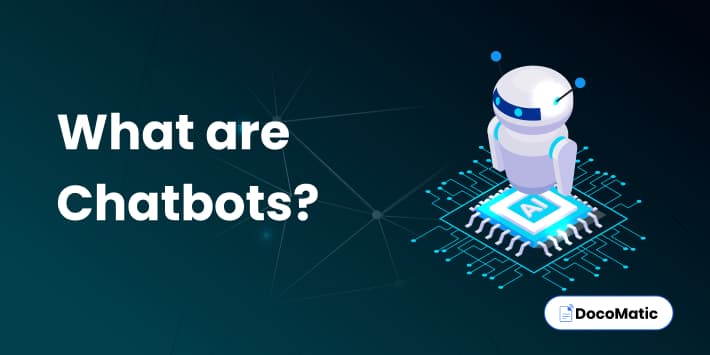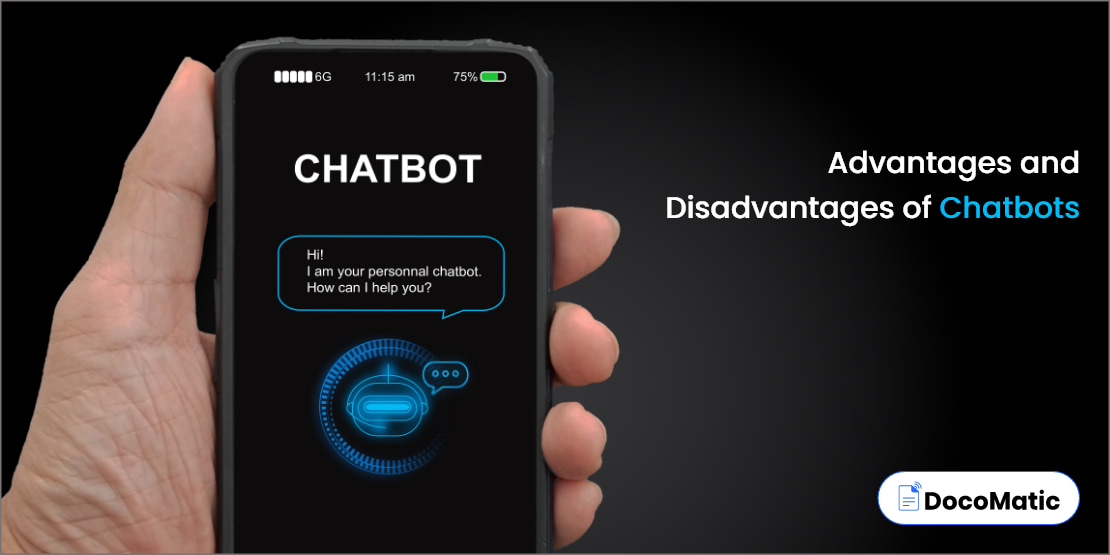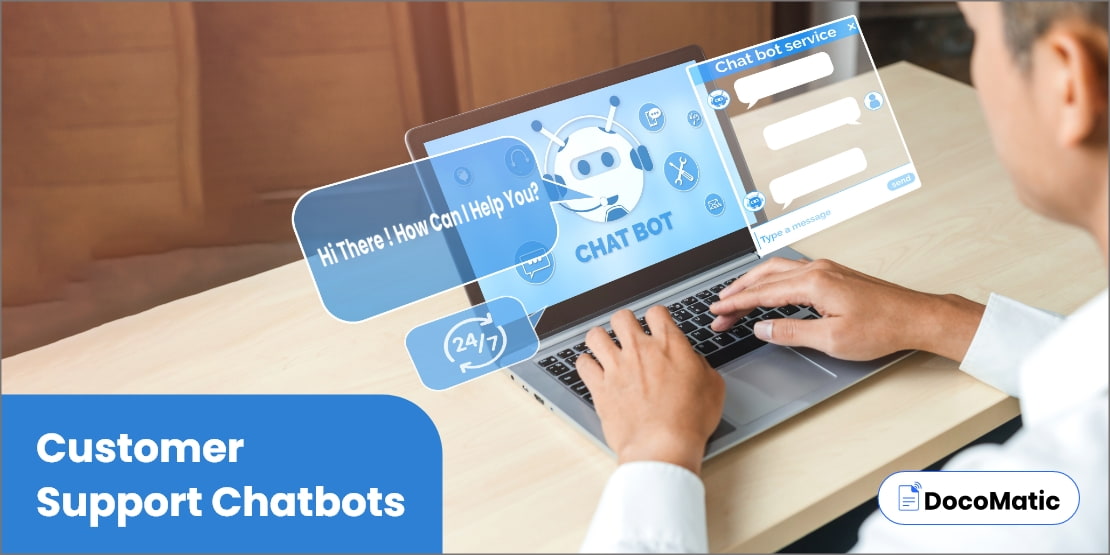As a business owner, you strive to provide exceptional customer service, as it determines the success rate of your business. For this reason, a business must implement effective communication strategies to interact with its clients. That’s when transactional chatbots come into the picture, offering a personalized and efficient way to communicate with customers.
Transactional chatbots are quickly emerging as the preferred option for businesses, looking to streamline their communications and boost their bottom line. The size of the global chatbot industry is expected to increase, with a compound annual growth rate (CAGR) of 25.7%, according to a new Grand Review Research report.
In this blog, we will introduce you to what a transactional chatbot is and provide real-life examples of businesses implementing them. This will give you the knowledge to decide whether such chatbots are ideal for your business or not. So, let’s get started.
Table of Content
Transactional Chatbot: Definition
A transactional chatbot is an artificial intelligence-powered tool to carry out specific tasks via messaging. It automates simple tasks involving handling repetitive tasks like responding to frequently requested queries, giving out product details, and dealing with customer complaints. They are programmed to provide personalized customer responses based on their specific needs and preferences.
They are made to function in particular sectors, like banking or e-commerce. These can be integrated with numerous platforms, such as websites, messaging apps, or social media sites. One of the key advantages is that it can improve the efficiency and accuracy of business operations. It can offer clients round-the-clock help at any time, which may boost customer satisfaction and retention rates.
Overall, transactional bots are an effective tool for businesses. On the contrary AI-based chatbots also contribute to streamlining operations and improving overall customer experiences.
Types of Transactional Chatbots
The type of transactional bot a business chooses will depend on its objectives and requirements. Let us find some of them:
1. Customer service chatbot designed to answer questions from customers and provide support. It contains relevant answers to frequently asked questions or instructions on how to solve problems.
2. Sales chatbot is created to help businesses in generating leads and sales. These chatbots can help clients to buy products and support them during the sales process.
3. Payment chatbots are designed to handle payments and financial transactions securely. Customers can receive a variety of payment alternatives from these chatbots.
Knowing the different types of transactional chatbots is only half the battle. However, there are some other types of Chatbots available to help businesses streamline their operations. In the next section, we will take a closer look at how they operate so that we make the most of their capabilities.
How Does a Transactional Chatbot work?
This chatbot is intended to manage transactions or carry out particular activities for clients. The basic steps of how it operates are listed below:
Step 1: The client initiates communication via a message service, website, or mobile application.
Step 2: To comprehend the intent and context of the message, natural language processing (NLP) and machine learning algorithms are used to process the message.
Step 3: Based on the customer’s inquiry, necessary actions are taken, such as placing an order, making a payment, or checking account information.
Step 4: The customer receives a confirmation message from the chatbot after it has finished the task.
Step 5: The chatbot continuously learns from each encounter with the consumer, which allows it to enhance its responses and accuracy.
Step 6: If the chatbot is unable to answer the customer’s question, it refers them to a human agent for additional help.
This is how the capabilities of such chatbots are only going to increase, making them answering machines for businesses of all sizes.
Advantages of a Transactional Chatbot
Virtual assistants like transactional bots are becoming popular among various businesses due to the numerous advantages they offer. Some of the benefits are:
1. Higher efficiency
This chatbot is capable of handling multiple consumer transactions at once without any delays. No matter what time zone the client is in, it is available around the clock to answer their questions. Moreover, automation will help the potential customers to get more accurate responses, thereby increasing the efficiency and effectiveness of the team.
2. Cost-effective
Using chatbots to automate customer service implies using fewer human agents, which can significantly reduce costs. Further, due to their 24/7 availability, they also increase cost-effectiveness. As a result, chatbots can cut costs significantly by streamlining operations and lowering labor costs.
3. Personalized interaction
Chatbot has the ability to know each individual consumer based on their preferences. This enables them to receive better recommendations and a more personalized conversation. This will contribute to an improvement in the customer experience because consumers are more inclined to engage with a business that delivers a personalized experience.
4. Higher sales
Sales can increase with personalized recommendations based on client preferences and previous purchases. The likelihood of lead generation or sales also increases as the chatbots handle many inquiries at once. Overall, it might boost the revenue and sales of your business.
5. Better customer experience
The round-the-clock accessibility and efficient customer service of the chatbot enhance the consumer experience. These can help organizations to grow by providing a smooth experience without any human intervention.
To conclude, each chatbot has its own advantages and disadvantages. We have covered some of the benefits of transactional chatbots; in the next section, we will dive into some of their use cases.
Real-life examples of Transactional Chatbot
These are a few instances of how companies are actually using transactional bots:
1. H & M: H&M, a clothing brand, has integrated a transactional bot on its Facebook Messenger platform. This allows customers to receive styling tips, get personalized recommendations, and track their orders.
2. Mastercard: They have introduced it to help the user with their credit card accounts. Customers can get help regarding account information, transaction tracking, and payment processing.
3. Pizza Hut: They utilize chatbots to enable customers to order pizza and receive details about special offers or promotions. Their chatbot is also connected to Facebook Messenger.
The aforementioned instances demonstrate how chatbots are used in a range of industries to provide the best customer service. But, what is the future of transactional chatbots? Read on to find it out.
The Future of Transactional Chatbot
With shifting consumer preferences, transactional chatbots have a very bright future. Some of the future developments or trends include:
- Better personalization: As bots get more smarter, users will have an even better experience. It might include suggestions or responses that are specifically tailored to each user’s preferences or history.
- Improved security: Security is particularly crucial when the chatbots handle sensitive transactional information. Future developments in security may include encryption, fraud detection, or biometric authentication.
- Advanced integration: Chatbots are being employed in a variety of businesses, but we can anticipate their combination with other advanced technology for more engaging experiences. Integration with voice assistants, augmented reality, and other cutting-edge technology are a few examples.
This is how chatbots will continue to offer more personalized communication to meet rising business and consumer demands.
FAQs
One of the best examples of a transactional chatbot is the Domino’s Pizza chatbot. This is integrated with Domino’s ordering system, which handles the ordering procedure, topping selection, payment, and delivery. Customers can also use the chatbot to order and track their pizzas.
Chatbots use various AI techniques to understand customer queries and responses. The key AI techniques chatbots use include natural language processing (NLP) and machine learning algorithms.
A transactional chatbot can handle an extensive range of transactions. A chatbot’s capacity for transactions is determined by the use case in question and the systems and APIs with which it is integrated. For example, scheduling appointments, processing payments, recommending products, responding to consumer inquiries, and more.
Below are some of the key features of a transactional chatbot:
- Ability to understand natural language
- Delivering personalized recommendations
- Dealing with complex transactions
- Integration with various APIs and platforms
- Menu-based chatbot provides a set of options to choose from, while transactional chatbot can understand and respond to natural language.
- Menu-based chatbots are less flexible and less expensive than transactional chatbots.
- Used cases of transactional bots include Customer support, FAQs, and Surveys. On the other hand, eCommerce, banking, insurance, and healthcare are examples of menu-based chatbots.
Conclusion
Transactional chatbots have completely changed the way businesses communicate with their customers. Businesses need to include this technology in their communication strategies to satisfy the constantly changing needs of their customers.
These chatbots have a promising future, so incorporating them with the right planning and execution will definitely grow your business. Hence, to stay ahead of the competition and avoid falling behind in the digital era, add a transactional chatbot to your business strategy and get started.






